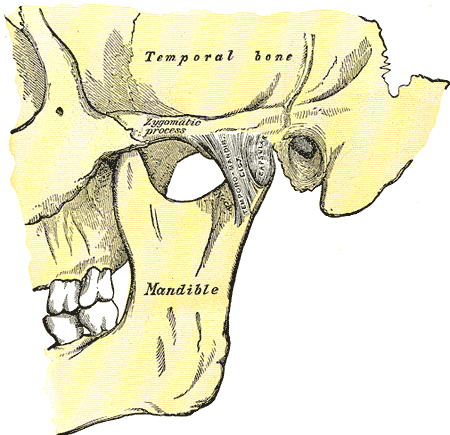mandibular fracture

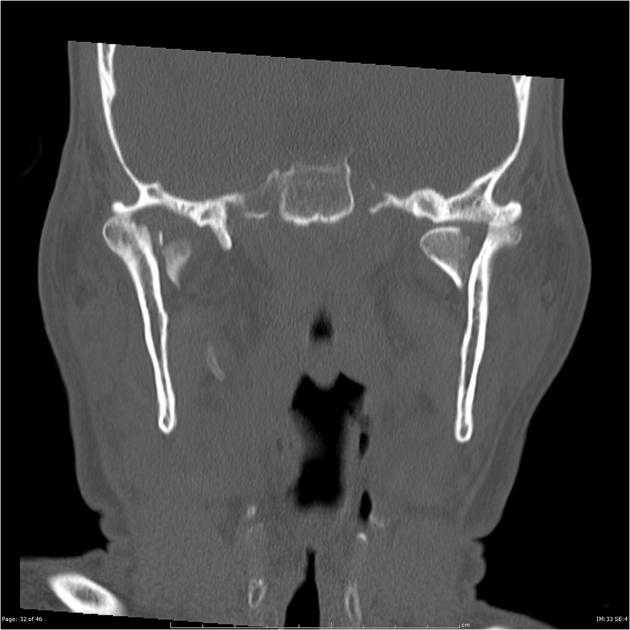



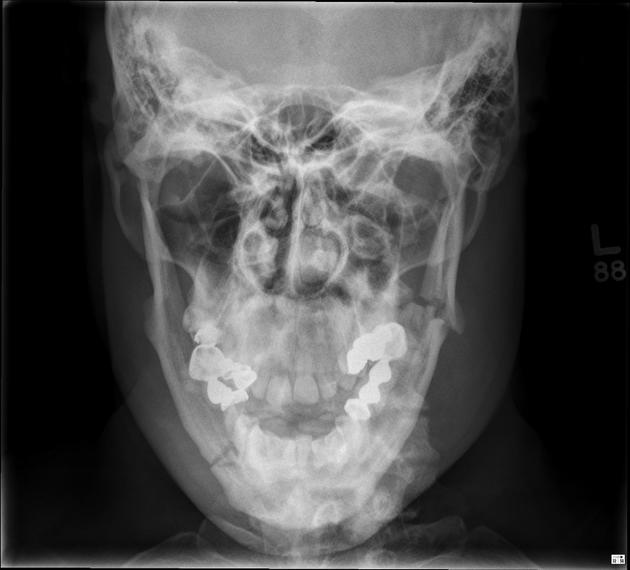
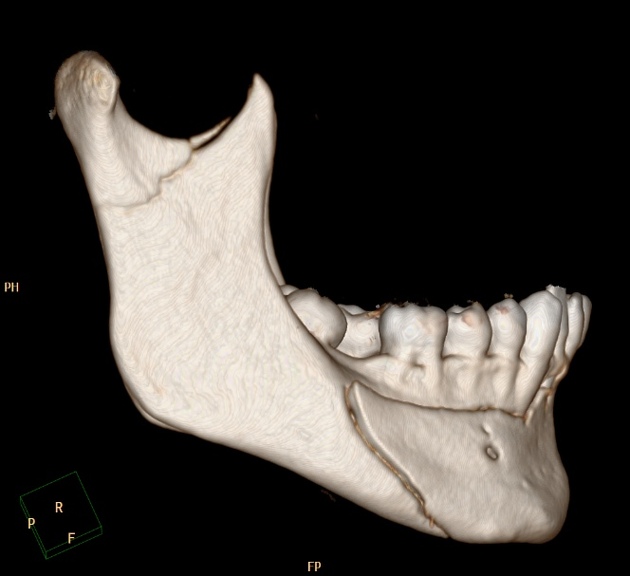


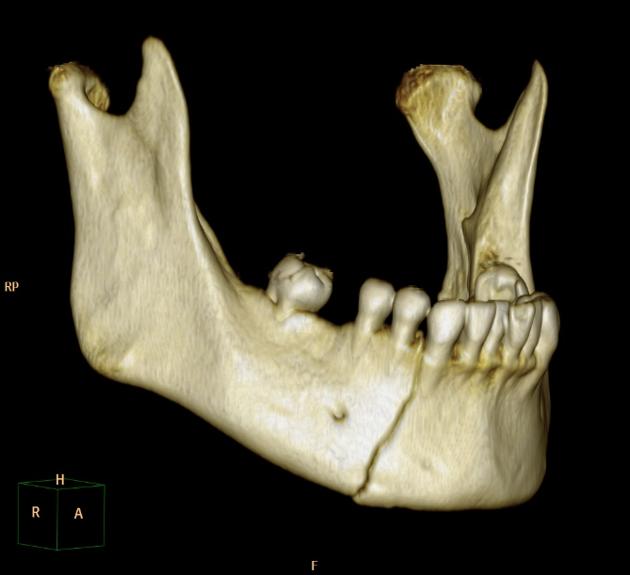
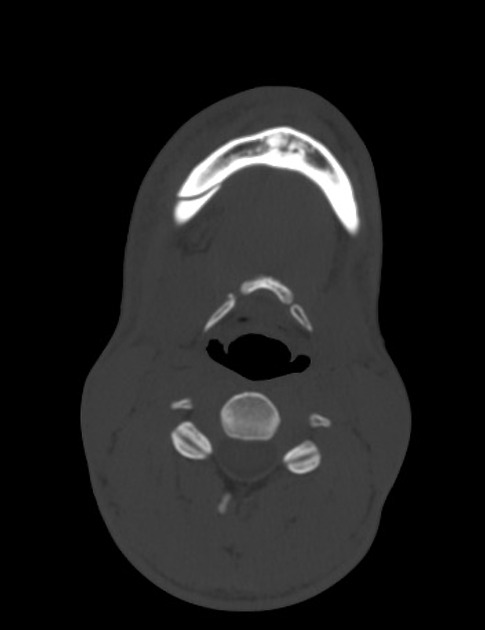
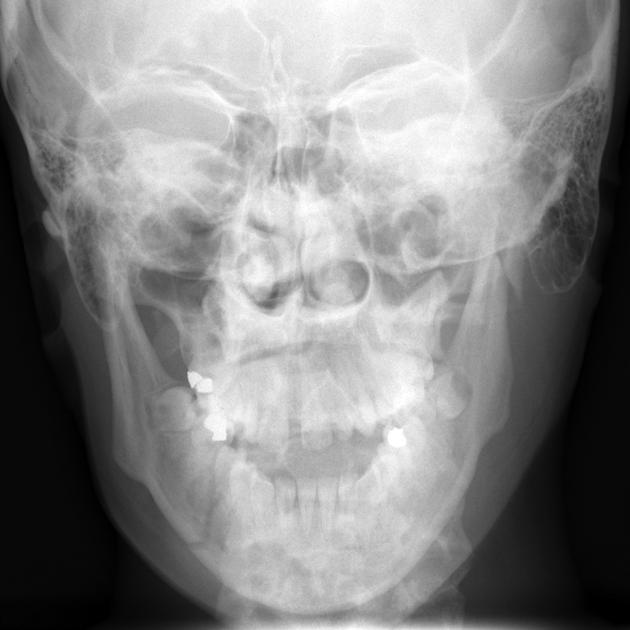

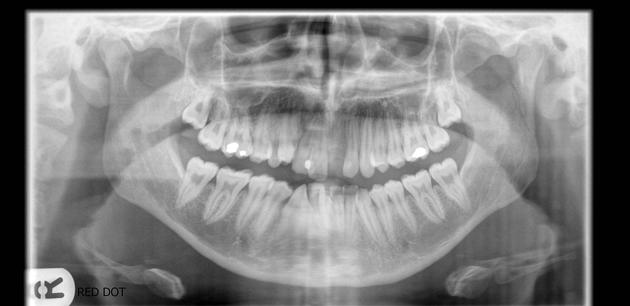
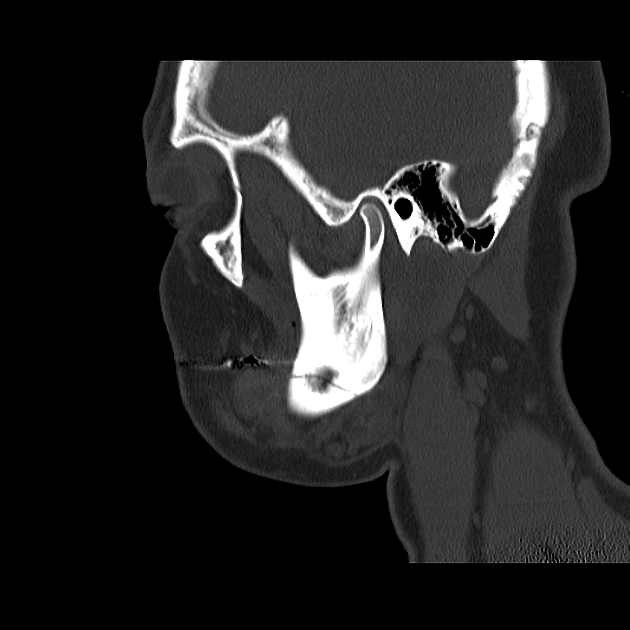
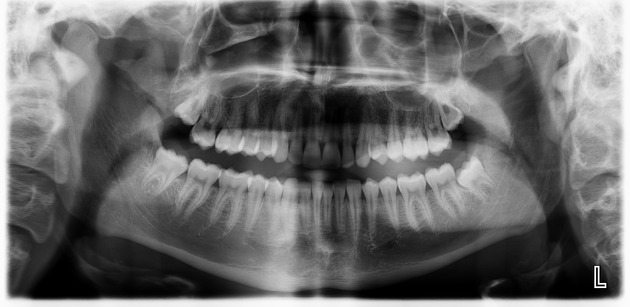
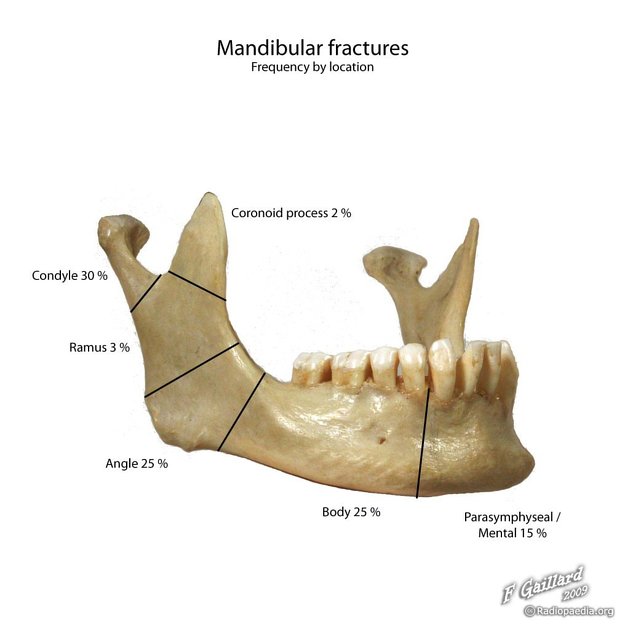
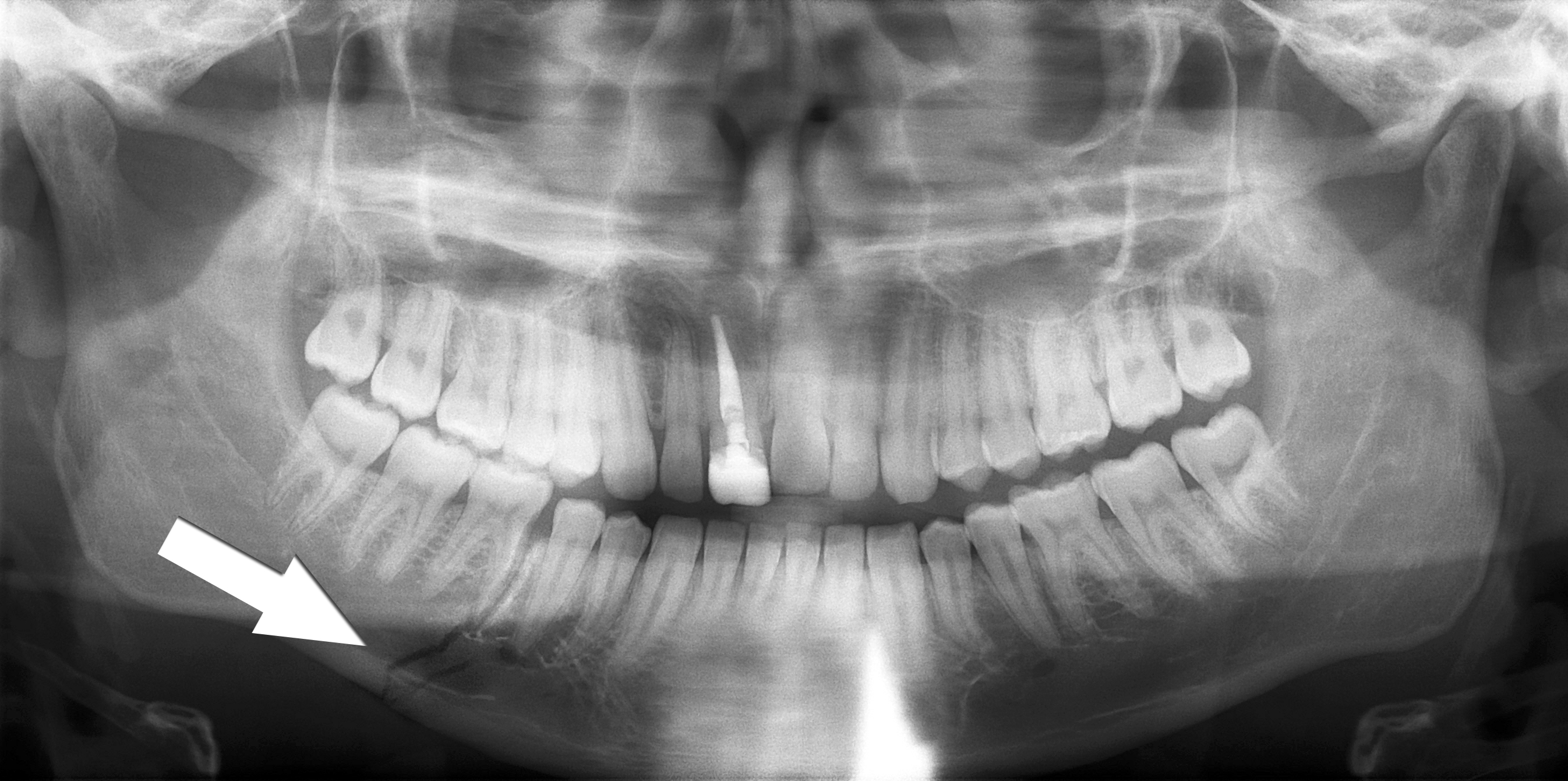
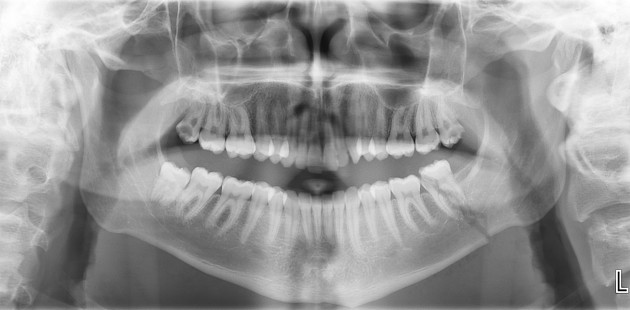
Mandibular fractures are relatively common especially among young men. Although traditionally the mandible and base of skull are thought to form a complete bony ring, interrupted only by the TMJs. This should mean that the mandible should fracture in two places (akin to the bony pelvis) making single fractures uncommon, but this in fact not the case, with ~40% of fractures being unifocal.
Epidemiology
Etiology and demographics will vary significantly depending on the population demographics and with where patients present. In the setting of a trauma center in New Zealand, 90% of patients are male, with 64% between the ages of 15 and 29 :
- assault: 50%
- intimate partner violence
- motor vehicle accident (MVA): 10%
- fall: 15%
- sport: 15%
- other: 10%
Clinical presentation
Presenting complaints will include :
- pain
- chin paresthesia (damage to the mental nerve, a terminal branch of the inferior alveolar nerve)
- malocclusion
- trismus
- dental damage
- abnormal mobility
- laceration of the skin of the external acoustic meatus
Pathology
Location
- angle: 20-33%
- body: 15-25%
- condyle or neck: 15-36% (see: TMJ trauma)
- parasymphyseal: 14-15%
- ramus: 5%
- coronoid process: 1-3%
- alveolar ridge: 2%
Unifocal fractures are common, accounting for approximately 40% of all mandibular fractures :
- multifocal: 60%
- unifocal: 40%
- simple: 25%
- comminuted: 10%
- associated with condylar subluxation: 5%
Subtypes
Treatment and prognosis
Treatment can be conservative or involve formal reduction (which may be open or closed). Closed reduction may be supported with intermaxillary fixation or splints (ORIF).
Complications
- osteomyelitis
- permanent malocclusion
- permanent paresthesia
Siehe auch:
und weiter:

 Assoziationen und Differentialdiagnosen zu Unterkieferfraktur:
Assoziationen und Differentialdiagnosen zu Unterkieferfraktur:




